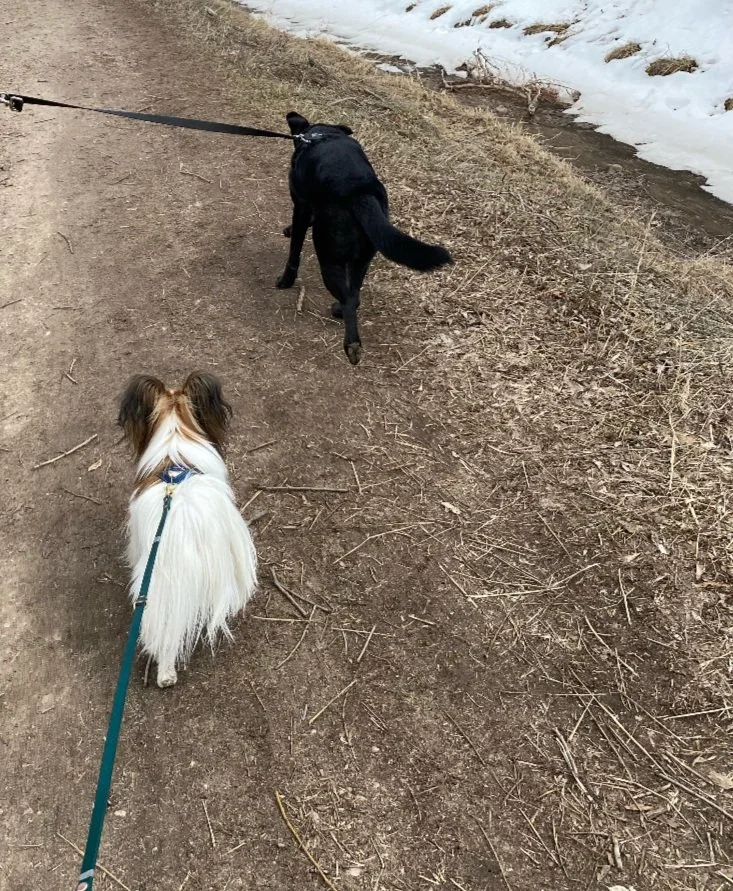Dream Walks With Your Puppy!
By Shay Cline
Oftentimes when we bring home a new puppy we have a lot of dreams about taking them for long strolls on our favorite trails or around the neighborhood. Some folks may already have a great walking routine down with adult dogs in the family and are eager for the new addition to dive right in. This may not always go as smoothly as we hope for a few reasons. Puppies run out of gas quickly and still have a lot of development to do physically and mentally. This often leads to one of several common behavior struggles on a walk.
Puppy stops walking and refuses to move
Puppy begins frantically biting their leash, your legs, ect.
Zoomies!
Inability to pass distractions calmly and/or confidently
It is important for puppies of all sizes to learn good leash skills! This includes the basic concept of how to follow along with a human while on leash. We also want to start teaching your puppy that the leash is associated with lots of fun adventures and shouldn’t be scary or frustrating. Learning these vital leash skills often looks very different from just going for a walk, like we may do with an older dog.
Here is a guide of how to keep expectations accurate based on your puppy’s age:
8-16 Weeks:
Keep sustained leash walking practice to very short busts. Puppies in this age range should have lots of opportunities to just explore the environment at their own pace. You’re there with your handy leash to keep them safe and out of trouble. Think of it more as a safety net than a steering wheel!
Stop if your puppy stops, and try to end sessions before or as soon as you notice any signs of fatigue.
Roughly 10 minutes of exploring at puppies pace in addition to maybe 2-3 minutes of any formal training.
4-6 Months:
We can begin to gradually increase the duration of adventures as the puppy’s stamina increases, but sustained walking (especially on sidewalks or other hard surfaces) should still be kept to short sessions.
6-12 Months:
Puppies begin to enter adolescence. With this comes a big increase in stamina, but it is also common for puppies in this age range to struggle a lot with self control and focus. Your puppy may become more sensitive to exciting distractions such as wildlife, people, or other dogs.
Emotional shifts are big and can happen quickly! Adolescent dogs are sensitive and can quickly become overstimulated or stressed, leading to pulling, lunging, excessive hunting behaviors, and more!
Place a big emphasis at this phase on sniffing, enrichment, and low-arousal play for exercise. Adjust training sessions as needed to keep them fun and successful.
Starting a puppy leash walking routine is crucial for setting them up to be successful for those strolls in the neighborhood or hiking on your favorite trails that you dream of long-term. If you need some guidance or help along the way, don’t hesitate to reach out to Summit or sign up for our puppy and adolescent classes to create solid foundational skills on the leash!
Owner walks a black puppy on a leash in Old Town Fort Collins


